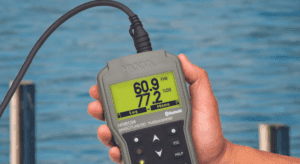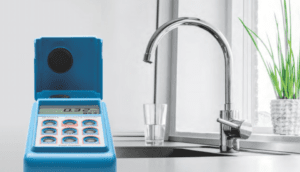Part 1. Disinfection
Properties of water bodies vary based on natural factors such as landscape position and slope, watershed size, geology, and soil composition, as well as man-made pollution.
Before a water source can be used for human, animal, or plant consumption, it must be assessed and possibly treated to make sure it is safe for consumption.
In a series of blog posts we will discuss some of the most important parameters in assessing water quality and Hanna’s solutions for measuring these parameters.
One of the main goals of water treatment is to kill disease-causing organisms (pathogens). This is achieved using chemical compounds with disinfectant properties. Once pathogens have been removed during wastewater disinfection, any residual disinfectant must be removed prior to discharge into a natural water body.
There are several disinfectant compounds available, including chlorine, ozone, bromine, and iodine dosing systems, of which chlorine is the most common.
Chlorine
Chlorine is one of the most cost-effective disinfectants used in a variety of different applications. Its use varies from light application in surface sanitation to heavy-duty disinfection of medical devices, to removal of microorganism infections in piping systems. The advantage of using chlorine over peroxide-type disinfectants is that chlorine is not only a strong oxidant, it also is capable of breaking tough chemical bonds found in cell walls or biofilms. Correct and effective use of chlorine helps to destroy disease-causing pathogens, reduce odors, and eliminate bacteria.
Chlorine levels must be actively monitored to ensure sufficient chlorine is present for disinfection, as well as to control adverse effects such as taste, odor, and potential reactions with organic matter to form harmful disinfection by-products.
It is important to note the difference between free and total chlorine. Free chlorine refers to available forms of chlorine, such as hypochlorous acid and hypochlorite, which are added to solutions for disinfection. When free chlorine combines with contaminants, it becomes combined chlorine, otherwise known as chloramines. Once chlorine is combined, it has a decreased ability to disinfect. The measure of total chlorine will always be higher than free chlorine, as it is the sum of both free chlorine and combined chlorine. Thus, measuring free chlorine is a direct indication of the effectiveness of the sanitizing solution.
Hanna Instruments offers a wide range of instrumentation for measuring chlorine. From Chemical Test Kits and Checker Handheld Colorimeters to single and multiparameter field meters and benchtops, Hanna has an accurate, affordable solution for nearly any free and total chlorine application.
Ozone
Ozone is a very strong oxidizing agent that destroys organic compounds that are especially difficult to oxidize. It is used as a disinfectant to kill disease-causing organisms and to remove manganese, combined chlorine, and other organic material from water. Ozone’s efficacy as a disinfectant is not affected by pH
Ozone is a naturally unstable compound and usually breaks down completely by the end of the water treatment process without the need for any additional chemicals to be added. In addition to this, the lack of harmful by-products, high efficiency, and exceptional removal of bad odors makes it ideal for wastewater treatment.
However, as a general principle, once pathogens have been removed during wastewater disinfection, any residual disinfectant must be removed prior to discharge into a natural water body.
Bromine
In many countries, bromine sanitizing has been introduced as an alternative to chlorine. Although it is not as strong as chlorine, it is more stable at higher temperatures and pH levels. There is very little reaction between bromine and nitrogen compounds reducing the unpleasant odors. Bromine is most often used in the sanitization of drinking water systems, pools and spas, and cooling towers.
Like chlorine, excess amounts of bromine in water can be dangerous to health and can cause eye irritation. Daily monitoring of bromine concentration prevents damage to equipment and contributes to the optimization and efficiency of the process while providing for increased user safety.
Iodine
The disinfectant properties of iodine have led to its use as an alternative to chlorine and bromine. Unlike chlorinated pools, water treated with iodine decreases eye irritation among swimmers and provides a level of disinfection more stable to adverse conditions. However, its toxic and corrosive properties, along with the difficulties of dissolving it in water, have limited its widespread acceptance. One of the most common applications of iodine is in the poultry industry process water.
Hanna Instruments offers a range of portable and benchtop photometers in single or multiparameter formats that can measure these and other elements. To explore our range of photometers, click on the links below.






